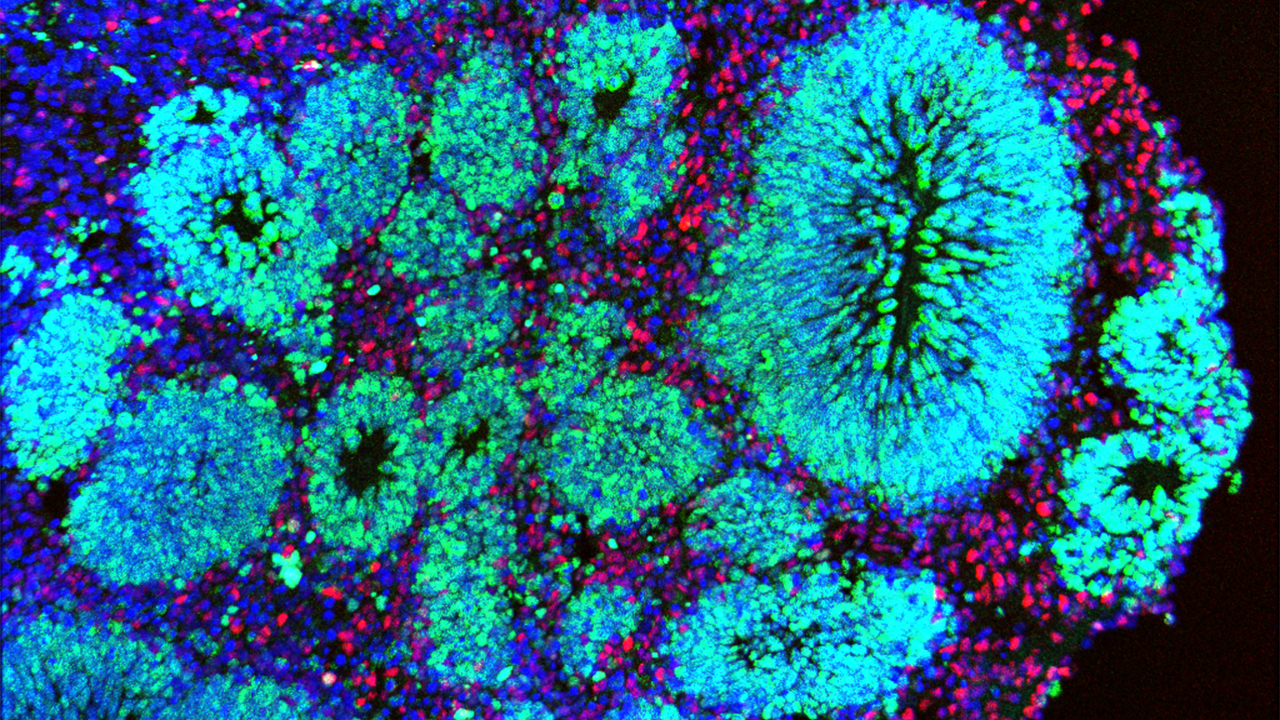
Novel brain research could feed misplaced sci-fi worries for the public
Ali Brivanlou (left) and Alta Charo answering questions during their virtual session on new methods in neuroscience at ScienceWriters2021.
Organoids and chimeras do pose ethical concerns, but experts say wild-eyed popular commentaries are off-base.
New techniques for studying incurable brain diseases use neural organoids, lab-grown nerve tissue derived from stem cells. Others use animal embryos injected with stem cells to create chimeras with “humanized” brains. While these methods show promise in advancing treatments and cures for people with diseases such as Alzheimer’s and Parkinson’s, stories about them also may bring to mind science fiction images that misrepresent the science and the real legal and ethical challenges researchers face, said R. Alta Charo, a bioethicist at the University of Wisconsin Law School.
“I’m a Star Trek fan. I understand the yuck factor of stories about ‘disembodied brains’ that are conscious, and revulsion at the idea that you could have a mouse that has anything humanized about it,” Charo said Oct. 4 during the Council for the Advancement of Science Writing’s Perlman Symposium, part of CASW’s New Horizons in Science program at the virtual ScienceWriters2021 conference.
Sci-fi characterizations can be provocative and attractive to wide audiences, she said, but focusing on imaginary problems can cloud society’s ability to deal with real and pressing concerns.
Charo, who has written and lectured extensively for decades about the ethical and legal implications of research, says journalists and other communicators can do more to help put novel science into context and in a more realistic frame.
For example, journalists can explain that while older animal models are used for teasing out causes of neurodegenerative diseases and advancing the search for cures, their value is limited by the differences between the brains of humans and animals like mice.

In contrast, a small collection of human brain cells grown from stem cells—a neural organoid—while lacking the complexity of a brain, can still offer a good first step for testing experimental drugs for brain diseases. In 2019, Rockefeller University molecular biologist Ali Brivanlou’s group reported in Nature that they had used neural organoids to identify some of the earliest biological origins of Huntington’s disease during brain development, suggesting potential new targets for treatments. Brivanlou described the group’s research during the same symposium.
Another technique for studying human diseases in animal models are human neural chimeras, which allow scientists to study human neurons within the brain of another animal. Chimeras are made by injecting human stem cells into an animal embryo early in development and allowing those cells to develop simultaneously with the host cells. Many of the host brain cells in a region such as the hippocampus or the cerebral cortex may be replaced with human cells.
Neural organoids and chimeras have prompted a slew of provocative opinion pieces about the possibilities of lab-grown brains becoming conscious, or Kafkaesque scenarios in which human minds are trapped inside animal bodies. But those scenarios don’t reflect reality. Scientists still don’t know how to define consciousness, let alone identify whether a lab-grown cluster of brain cells has it.
An April report from the National Academies of Sciences, Engineering, and Medicine lays out the ways in which neural organoids lack the complexity needed for awareness, consciousness, or pain perception. Of greater concern are likely advances in neural chimera technology that would further blur the boundary between human and nonhuman animal research, said Charo, who served on the committee that produced the report.
Animal welfare becomes a more complicated issue when considering human-animal chimeras that may experience heightened pain. This question doesn’t get enough attention, Charo said. “We’re worried about the humans trapped in the animal instead of the animal that’s trapped in the animal.” The National Academies report urged collaboration with the federally funded Institutional Animal Care and Use Committee, which oversees the welfare of research animals, to develop and implement cognitive evaluations specifically for chimeric animals.
Another ethics concern raised in the report relates to whether previously collected and donated biological materials can be used without consent from the original donors. One could imagine a patient being concerned that cells that were removed from them during surgery or biopsy would be combined with a nonhuman animal, Charo said. A report published in the journal Genetics in Medicine in 2012 urges that repositories of such material maintain contact with and relay significant findings to donors.
As neural organoid and chimera technologies advance, the scientific community must continue to be open to difficult conversations with colleagues and the public, Charo said.